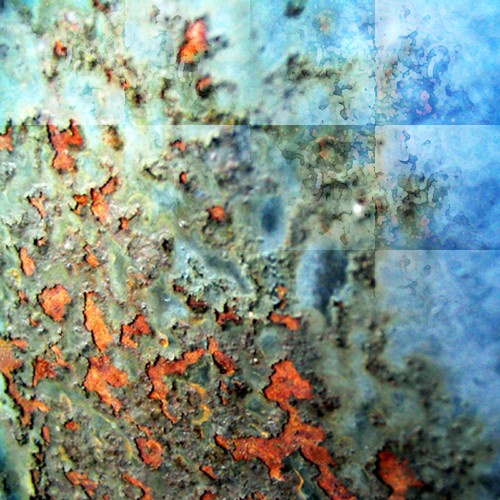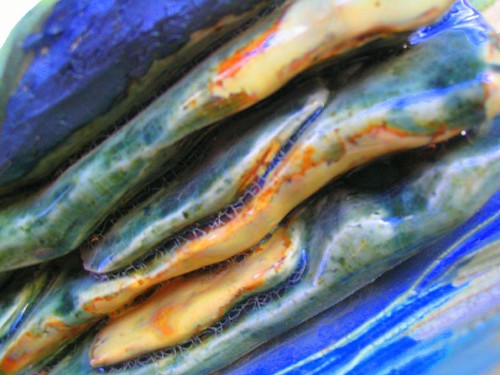Once blue is acquired it eclipses green

Once blue is acquired it eclipses green Originally uploaded by MontanaRaven.
"Under normal vision the most probably colors of things do not necessarily match up with their names. Physically, eyes see the colors of the spectrum the same, but when we utter a term for a color, it is not the color's immutable property; it is the name of a perception. In the hands of language and culture, simple chromatic sensations acquire a kaleidoscope of reference and meaning. As writer Alexander Theroux suggest, color is fictive space.-- by Ellen Meloy from The Anthropology of Turquoise: Reflections on Desert, Sea, Stone, and Sky Copyright Ellen Meloy, 2002.
When a name for a color is absent from a language, it is usually blue. When a name for a color is indefinite, it is usually green. Ancient Hebrew, Welsh, Vietnamese, and, until recently, the Assyrians turned uknu, the noun for lapis lazuli, into an adjective. The Icelandic word for blue and black is the same, one word that fits sea, lava, and raven ... Goethe's blue is the color of enchanting nothingness.
It has been shown that the words for colors enter evolving languages in this order, nearly universally: black, white, and red, then yellow and green (in either order) with green covering blue until blue comes into itself. Once blue is acquired, it eclipses green. Once named, blue pushes green into a less definite version. Green confusion is manifest in turquoise, the is-it-blue-or-is-it-green color .... "
Along with Turquoise, the following three books, also by Ellen Meloy, are on my bedroom bookshelf (meaning I read them often -- not just once) and I highly recommend any of these:
Raven's Exile
Eating Stone: Imagination and the Loss of the Wild
The Last Cheater's Waltz: Beauty and Violence in the Desert Southwest

More from The Anthropology of Turquoise:
"Within every color lies a story, and stories are the binding agent of culture. The color name ochre comes from a word that Homer used with chloros (a greenish tinge) to express the pallor of men's faces in the fear of battle. Amethyst comes from the Greek amethystos, "not drunk," topaz from topazein, "to conjecture," because the Greeks believed the gem's source was an island hidden by clouds and fog. I dip my brush into a pan of lacustrine blue. Five centuries ago lapis lazuli came from the Sinai or across the sky-raking Hindu Kush to Europe, there to be ground into powder for painters of the Madonna's robes. The Maya mixed clay and indigo in a complex chemistry to find a blue that a person could take to the afterlife."-- Ellen Meloy, Copyright 2002 by Ellen Meloy


















0 Comments:
Post a Comment